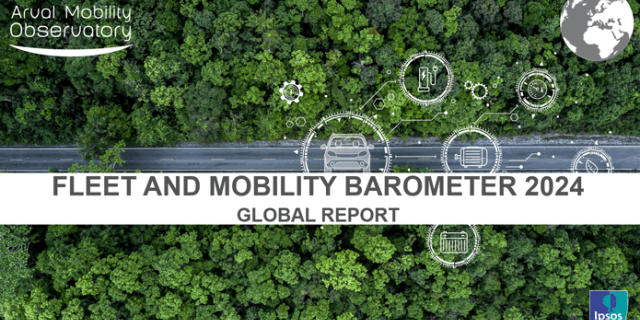BE A SMART COMPANY – BUT HOW?
Leadership in environmental and social measures is no longer a question of compliance, but of differentiation and competitiveness. The metrics, levers, and principles that companies implement to drive sustainability increasingly shape their success in the market.
Across various studies, key reasons cited by company leaders when implementing sustainability targets include:
- Managing corporate reputation toward all stakeholders,
- Increasing efficiency of the operation,
- Overall market competitiveness, and
- Driving innovation.
Companies are also being benchmarked each other by investors and customers with respect to their sustainable mobility and responsibility targets . Rigid sustainability practices are even increasingly included as minimum standards in competitive tenders. And when individual companies sign up in new, international industry coalitions on climate change action, many will also commit to support each other. In other words – smart companies prefer to do business with other smart companies. This creates a positive network effect: each link in the supply chain drives standards for the next.
Yet, how do companies quantify progress toward these sometimes vague notions of “sustainability” and “responsibility”?
Metrics
Simple compliance with international or national targets on emissions has in recent years yielded to even more ambitious targets enacted by companies. Over 80% of CEOs surveyed by PWC in 2017 believe “it’s important to measure and try to reduce” their company’s environmental footprint, and report on it accordingly.
In Europe, the Directive on disclosure of non-financial and diversity information means that reporting on certain environmental, social and other non-financial matters is mandatory. This – along with similar guidelines from the OECD, the UN and ISO – create frameworks for reporting. Most progressive companies have, however, published expansive sustainability reports for many years.
As part of their reporting, companies will often set out clear metrics, for example with reductions in
- Overall emissions (e.g. from transportation, production, and facilities),
- Water, energy and other resource use, and
- Sourcing and production waste.
Specific to their transportation needs, companies may also implement measurable targets that enact engine size, body-type, or CO2 (or NOx) caps on all vehicles, or even caps on corporate travel altogether.
Levers
The specific actions that companies then take toward their responsibility and sustainability targets are as varied and complex as the industries they operate in. Production companies will look toward reducing waste, energy use, and emissions throughout their supply chain; service companies might consider the times and style of working of office-based employees, as well as their footprint. All types of companies will consider the individual behaviour of their staff.
In most any company, transportation will be a key contributor to its carbon-footprint. Transport contributes to around 20% of greenhouse gas emissions across the EU – with 75% from road transport. And while energy, agriculture and industry have each decreased emissions over the last quarter century, transport emissions are still 20% higher than in 1990. Across Europe – and in fact the world – this is leading to increasing restrictions and taxation on city-access, emissions, and vehicle use policies. Transport and mobility become the largest levers for companies in their sustainability efforts.
A more fundamental microeconomic plays into a company’s sustainability targets, however. In most scenarios, a company that utilises its factory assets as poorly as its automotive assets – often for merely 1-2 hours per day – would surely face insolvency. Aligning fleet size, maximising utilisation rates, and seeking out alternatives to traditional mobility are not just key levers of a sustainability plan – it represents significant potential for optimisation!
Some companies limit the availability of parking, perk vehicles, or implement telematics to monitor and influence driver behaviour. Others opt to incentivise alternatives – by offering staff bicycle-schemes and mobility cards. Whatever the case, these individual levers together contribute toward a broader, integrated transport plan that also incorporates customers and production. The role of the fleet and sourcing professionals grows further in importance.
Principles
Just like profitability is monitored across every department, division and function, so are the ambitions of a sustainable company mirrored in individual targets and actions. More fundamental than these sustainability and responsibility metrics, however, are the principles that they live by day-to-day.
Just as a CEO might fly Economy class to set a tone of frugality, so she or he might explicitly opt for public transport rather than a chauffeur. In responsible companies, sustainability principles are “felt” and observed, rather than written down. Where they are explicit, they may include statements such as:
- We hire staff that respect people, planet and profits in equal measure,
- We reward innovation that creates efficiency and reduces waste,
- We prefer business partners that share our values, and
- We question the merits of each business journey.
Each of the overall objectives of a smart plan is underpinned by trust. Therefore, penultimate among all principles must be truthfulness and transparency toward suppliers, customers, employees and investors.
By enacting common-sense principles, companies make significant strides in bringing people, planet, and profits together in a responsible, sustainable way. It also helps their business succeed.










